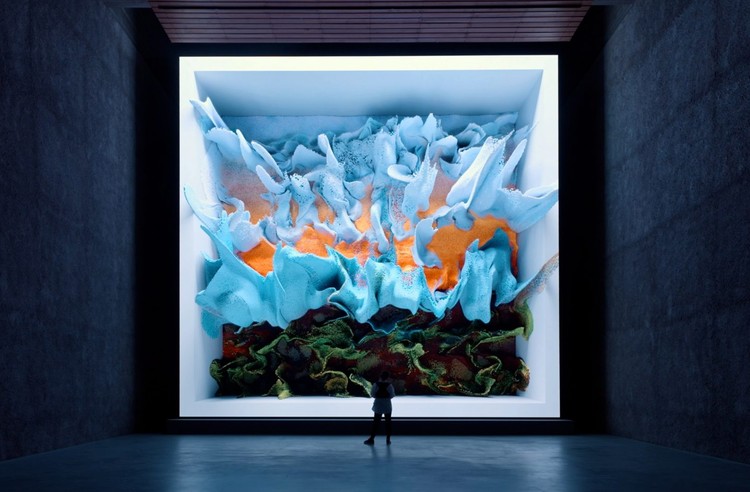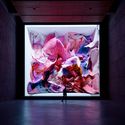
Architecture shapes our lives every day, but how can it be decentralized? At the core of efforts to design extended reality (XR) environments is a desire to make these projects more human and more relatable. As technologists, architects, and users themselves develop new tools for the metaverse, as well as augmented and virtual spaces, new projects are increasingly democratized and open source. At the same time, the design process is being reimagined.

Mixed reality and virtual worlds share a common goal to create a well-constructed environment grounded in human emotions, sensations and connection. Between ideas of augmentation and immersion, often these projects have been created in the hands of specialists from varied fields of technology. As they are shaping reality, what happens when anyone can be a designer? While reality is defined as the "actual state of things", it also extends to spaces, facts, and events taken as a whole. This state of affairs is changing within a spectrum of "real" and virtual environments being created by new voices.

Cyberpunk authors of the 20th century like Gibson and Stephenson imagined a virtual reality-enabled internet, and in his novel Snow Crash, Stephenson called it Metaverse. In architecture and technology, the term "virtual" has grown increasingly associated with reality alongside the idea of a fully virtual metaverse. As these "realities" continues to evolve, it will revolutionize architecture, engineering, and construction. This evolution also includes MR (Mixed Reality) and AR (Augmented Reality). Each offers benefits that were hardly imaginable only a few short years ago. Projects can be walked through before being built, interiors can be visualized before all the details are decided, and clients and users can create designs for themselves.
As architectural designer Xiaohang Hou outlined, the infinite nature of XR space allows people to interact with the virtual world through the real world, changing the demand for public space and making urban design more complex. "When people perceive metaverse architecture as an extension of the real world, it influences their perceptions and expectations, causing a revolution in the real world." Exploring the fusion and democratization of XR, as well as the metaverse and new technologies, the following articles dive into how more people are joining in on the expression and design of architecture.
Social VR. Mixed Reality and Generative Design

Whatever you do, technology probably gives you a better way to do it. That’s the prevailing wisdom at architecture firm Perkins+Will. While many design practices cling to old ways of working, Perkins+Will perpetually mines technology for innovations to make architecture easier, faster, and better. Perkins+Will is driven to test and adopt many next-generation innovations during its 82-year history, the latest of which are: big data; virtual, mixed, and augmented reality; and generative and computational design. Learning from its experiments can help a firm take advantage of emerging opportunities and sweeten old practices with new thinking.
What is the Metaverse?

You may get an idea of what life in metaverse could be like from movies like “Ready Player One” and “Matrix”, where anything we can imagine can exist, and we can connect to the metaverse all the time to extend our real lives with extraordinary experiences. There are a lot of articles out there to give various definitions and standards to the metaverse, and here are two favorite ones: The Metaverse: What It Is, Where to Find it, Who Will Build It, and Fortnite and State of the Metaverse 2021.
Use of Virtual Reality in Architecture

The importance of the use of advanced technologies, such as the likes of virtual reality in the scene of architecture, is becoming increasingly necessary. No matter how beautiful a rendered image may be, it will always lack the capacity to fully convey the scope and feel of a project as a whole, further perpetuating the necessity to incorporate the use of these technologies at a professional practice level. Architects who choose not to adopt the use of virtual reality technologies into their design process fall victim to being at a significant disadvantage.
Morphosis Explores XR and the Future of Design Technologies

Shifts in technology reflect how designers are creating experiences of architecture and cities. New advances engender novel ways of working, and in turn, shape our design process. As a practice defined by pushing boundaries, experimenting with workflows, and embracing new design technologies, Morphosis has a forty-year history of enthusiastically wondering at the future, and they are research and developing immersive experiences (XR) with new technologies.
World's First Pavilion-Scale Structure Built Using Augmented Reality

Fologram has recently built the world’s first pavilion-scale steel structure using the HoloLens, displaying the possibilities of integrating standard CAD workflow with augmented reality. By displaying the generative design model through holographic instructions rather than traditional 2D drawings, it explores the potential of revolutionizing the bridge between design and construction.
Layering of Realities: VR, AR, and MR

Working remotely has accelerated the introduction of new approaches to real-time rendering, and with it, a new necessity was born: how can a person feel physically present inside a space, without actually being there? Ultimately, designers resorted to the virtual world, a vast realm of interactive built environments that can be accessed from the comfort of one's home. We have become accustomed to build, modify, and navigate between different environments, going back and forth between what is real and what isn't. Truth is, virtual has become the new normal.
This article is part of the ArchDaily Topics: Democratization of Design. Every month we explore a topic in-depth through articles, interviews, news, and projects. Learn more about our ArchDaily topics. As always, at ArchDaily we welcome the contributions of our readers; if you want to submit an article or project, contact us.






